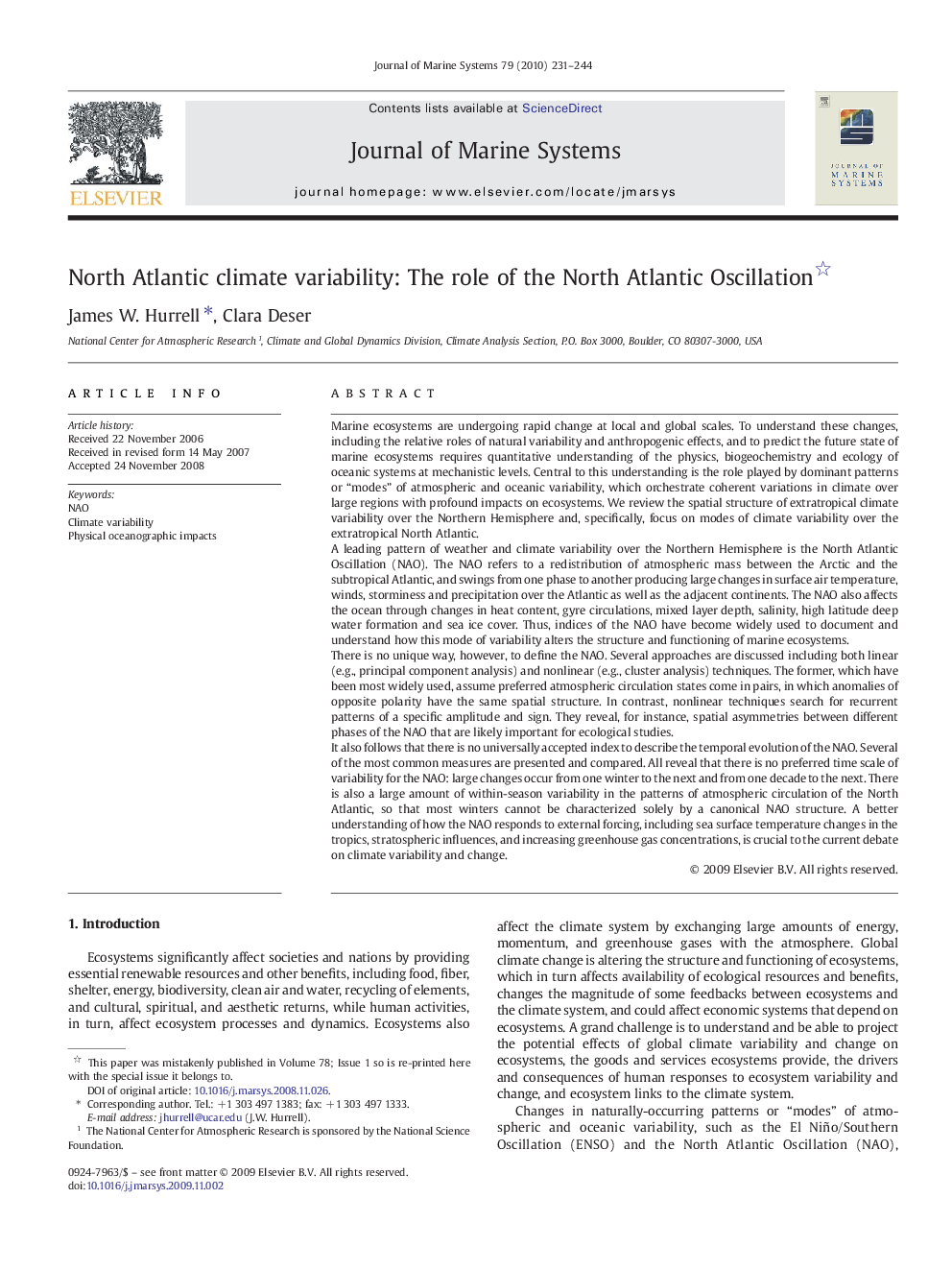| کد مقاله | کد نشریه | سال انتشار | مقاله انگلیسی | نسخه تمام متن |
|---|---|---|---|---|
| 4548621 | 1627336 | 2010 | 14 صفحه PDF | دانلود رایگان |

Marine ecosystems are undergoing rapid change at local and global scales. To understand these changes, including the relative roles of natural variability and anthropogenic effects, and to predict the future state of marine ecosystems requires quantitative understanding of the physics, biogeochemistry and ecology of oceanic systems at mechanistic levels. Central to this understanding is the role played by dominant patterns or “modes” of atmospheric and oceanic variability, which orchestrate coherent variations in climate over large regions with profound impacts on ecosystems. We review the spatial structure of extratropical climate variability over the Northern Hemisphere and, specifically, focus on modes of climate variability over the extratropical North Atlantic.A leading pattern of weather and climate variability over the Northern Hemisphere is the North Atlantic Oscillation (NAO). The NAO refers to a redistribution of atmospheric mass between the Arctic and the subtropical Atlantic, and swings from one phase to another producing large changes in surface air temperature, winds, storminess and precipitation over the Atlantic as well as the adjacent continents. The NAO also affects the ocean through changes in heat content, gyre circulations, mixed layer depth, salinity, high latitude deep water formation and sea ice cover. Thus, indices of the NAO have become widely used to document and understand how this mode of variability alters the structure and functioning of marine ecosystems.There is no unique way, however, to define the NAO. Several approaches are discussed including both linear (e.g., principal component analysis) and nonlinear (e.g., cluster analysis) techniques. The former, which have been most widely used, assume preferred atmospheric circulation states come in pairs, in which anomalies of opposite polarity have the same spatial structure. In contrast, nonlinear techniques search for recurrent patterns of a specific amplitude and sign. They reveal, for instance, spatial asymmetries between different phases of the NAO that are likely important for ecological studies.It also follows that there is no universally accepted index to describe the temporal evolution of the NAO. Several of the most common measures are presented and compared. All reveal that there is no preferred time scale of variability for the NAO: large changes occur from one winter to the next and from one decade to the next. There is also a large amount of within-season variability in the patterns of atmospheric circulation of the North Atlantic, so that most winters cannot be characterized solely by a canonical NAO structure. A better understanding of how the NAO responds to external forcing, including sea surface temperature changes in the tropics, stratospheric influences, and increasing greenhouse gas concentrations, is crucial to the current debate on climate variability and change.
Journal: Journal of Marine Systems - Volume 79, Issues 3–4, 10 February 2010, Pages 231–244